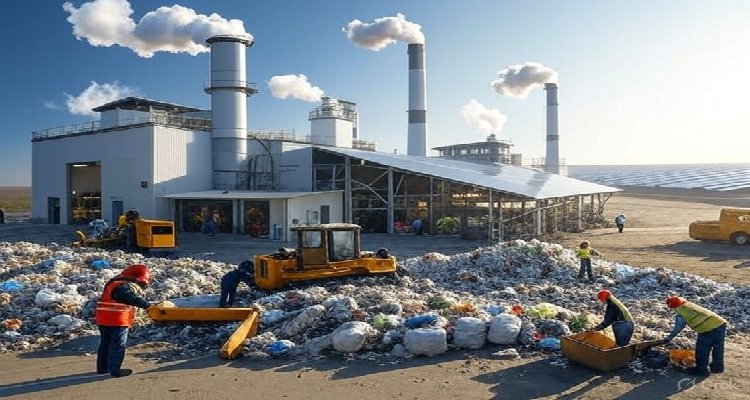The Secret Energy Hidden in Trash That Could Power Nations
Trash is no longer just waste—it holds secret energy potential that could fuel entire nations. Discover how waste-to-energy is reshaping the future.
Introduction: Turning Garbage Into Gold
What if the overflowing landfills and garbage dumps we see every day weren’t just eyesores, but untapped treasure troves of power? Around the world, billions of tons of waste are generated each year, and most of it is left to rot or buried deep underground. Yet hidden within this trash is a powerful source of renewable energy that could help nations reduce dependence on fossil fuels and tackle climate change. The secret lies in waste-to-energy (WtE) technology—a system that transforms garbage into electricity, heat, and even fuel.
Context & Background: A Global Waste Crisis
According to the World Bank, the planet generates over 2.2 billion tons of solid waste annually, a figure expected to rise to 3.4 billion tons by 2050. Traditionally, much of this waste has ended up in landfills, where it contributes to methane emissions—a greenhouse gas 84 times more potent than CO₂.
As the world races to meet net-zero climate targets, governments and industries are rethinking waste not just as an environmental problem but as an opportunity. Countries like Sweden, Japan, and Singapore are already demonstrating how trash can be a valuable energy resource, fueling homes, businesses, and even public transportation systems.
Main Developments: Unlocking Power From Trash
Waste-to-energy facilities operate on several models, but the most common involves incineration—burning garbage at high temperatures to produce steam, which then powers turbines for electricity generation. Newer technologies such as anaerobic digestion (breaking down organic waste to produce biogas) and gasification (converting waste into synthetic gas) are making the process cleaner and more efficient.
- Sweden’s Success: Sweden imports trash from other European countries because its WtE plants generate more energy than domestic waste alone can supply. Today, less than 1% of Swedish waste ends up in landfills.
- Japan’s Innovation: Japan operates over 1,000 WtE plants, many of which power entire communities, reducing reliance on imported fossil fuels.
- The US Challenge: While the US generates more waste than any other country, only a small fraction is converted to energy, with most still ending up in landfills. Expanding WtE could transform the nation’s energy landscape.
Expert Insight: What Professionals Are Saying
“Waste-to-energy is not just about electricity—it’s about creating a circular economy where nothing goes to waste,” explains Dr. Lina Martinez, an environmental engineer at the International Energy Agency. “With advanced filtration and carbon capture, modern plants are far cleaner than their early predecessors.”
However, critics warn about potential downsides. Environmental groups argue that incineration, if not properly managed, can release toxic pollutants. Advocates respond that newer systems now comply with strict emission standards, making them safer and more sustainable.
Public sentiment is shifting as well. In cities where WtE has reduced landfill overflow and provided affordable electricity, residents often see it as a win-win solution—cleaner streets, lower emissions, and stable power supplies.
Impact & Implications: A New Energy Frontier
The potential impact of waste-to-energy is massive:
- Reducing Landfill Dependence: Less trash buried underground means reduced methane emissions and more usable land.
- Boosting Energy Security: Countries can cut reliance on oil, coal, and natural gas imports.
- Job Creation: WtE facilities require engineers, technicians, and operations staff, fueling green job growth.
- Climate Benefits: Converting waste to energy lowers greenhouse gas emissions compared to traditional disposal methods.
For developing nations, WtE could solve two challenges at once—managing overflowing waste and expanding electricity access. In fact, the UN estimates that just 30% of global waste converted into energy could power nearly 100 million homes.
Conclusion: From Trash to Tomorrow
The idea that yesterday’s garbage could light tomorrow’s homes is no longer science fiction—it’s becoming reality. While no single technology can solve the global energy crisis, waste-to-energy represents a critical piece of the puzzle. Nations that embrace it could not only clean their streets but also power their economies sustainably.
As the world continues its search for cleaner energy, the trash we throw away every day might just hold the key to a greener future.
Disclaimer :This article is for informational purposes only. It does not provide financial, legal, or investment advice. Readers should consult professionals before making decisions related to energy projects or environmental policies.











